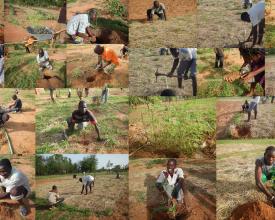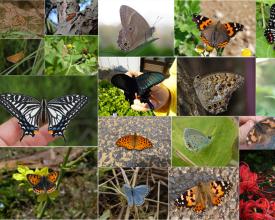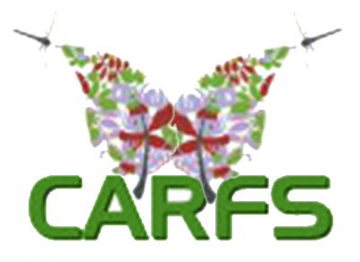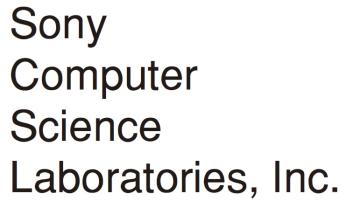
Proyecto de sinecocultura (agricultura sinecológica)
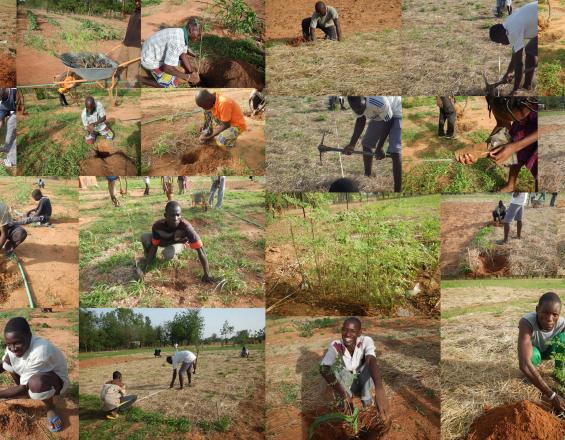
Construimos un novedoso método de horticultura: Synecoculture, basado en la asociación mixta de alta densidad de plantas comestibles sin la aplicación de labranza, fertilizantes ni productos químicos.
Introdujimos una gran diversidad de cultivos (200 especies, 700 variedades en 1000㎡) para obtener cosechas sostenibles durante todo el año. Se demostró que así se reforzaba la seguridad alimentaria, el perfil nutricional, la calidad del suelo, la rentabilidad, la adaptación al clima y la biodiversidad de los campos.
En Japón, la productividad se multiplicó por 2 a 4 en comparación con el método convencional.
En Burkina Faso, la productividad se multiplicó por 40 a 150 y la rentabilidad por 10 en la región del trópico árido.
La extrapolación lineal de los resultados muestra que una propagación estratégica de la sinecocultura podría elevar a toda la población de Burkina Faso por encima del umbral de la pobreza y alcanzar sustancialmente los objetivos de biodiversidad de Aichi.
Contexto
Défis à relever
Ubicación
Impactos
Hemos introducido unas 200 especies de plantas comestibles (700 variedades) a escala 1000㎡ en Japón desde 2010, y 150 especies en 500 ㎡ en Burkina Faso en 2015 bajo la coexistencia controlada con especies de origen natural. No se aplicaron labranza ni productos químicos para preservar el suelo y los ecosistemas, ni fertilizantes para evitar la contaminación del agua.
Los sistemas de policultivo mixto de alta densidad pasaron por un proceso de autoorganización basado en el crecimiento espontáneo de la comunidad vegetal bajo la dirección del hombre mediante el aclareo de la cosecha para mantener la coexistencia de varias especies.
Como consecuencia, el campo y los entornos circundantes aumentaron la biodiversidad más allá de un estado de conservación natural. La observación visual con el uso de las TIC registró más de 1000 especies de plantas e insectos en Japón, incluidas las especies de la lista roja de datos de la UICN en una parcela. Un terreno árido abandonado en Burkina Faso restableció la vegetación hasta la fase más madura de sucesión primaria en cuanto a composición de especies.
En Burkina Faso, los costes totales de la aplicación ascendieron a 1.487.218 FCFA/año/500㎡ incluyendo semillas, agua, herramientas y costes de mano de obra, con una productividad de 7.572.000 FCFA/año/500㎡. El resultado es una rentabilidad total de 5,09 (5 veces más beneficios que la inversión total) desde el primer año, 10 veces superior a la de otros métodos probados.
